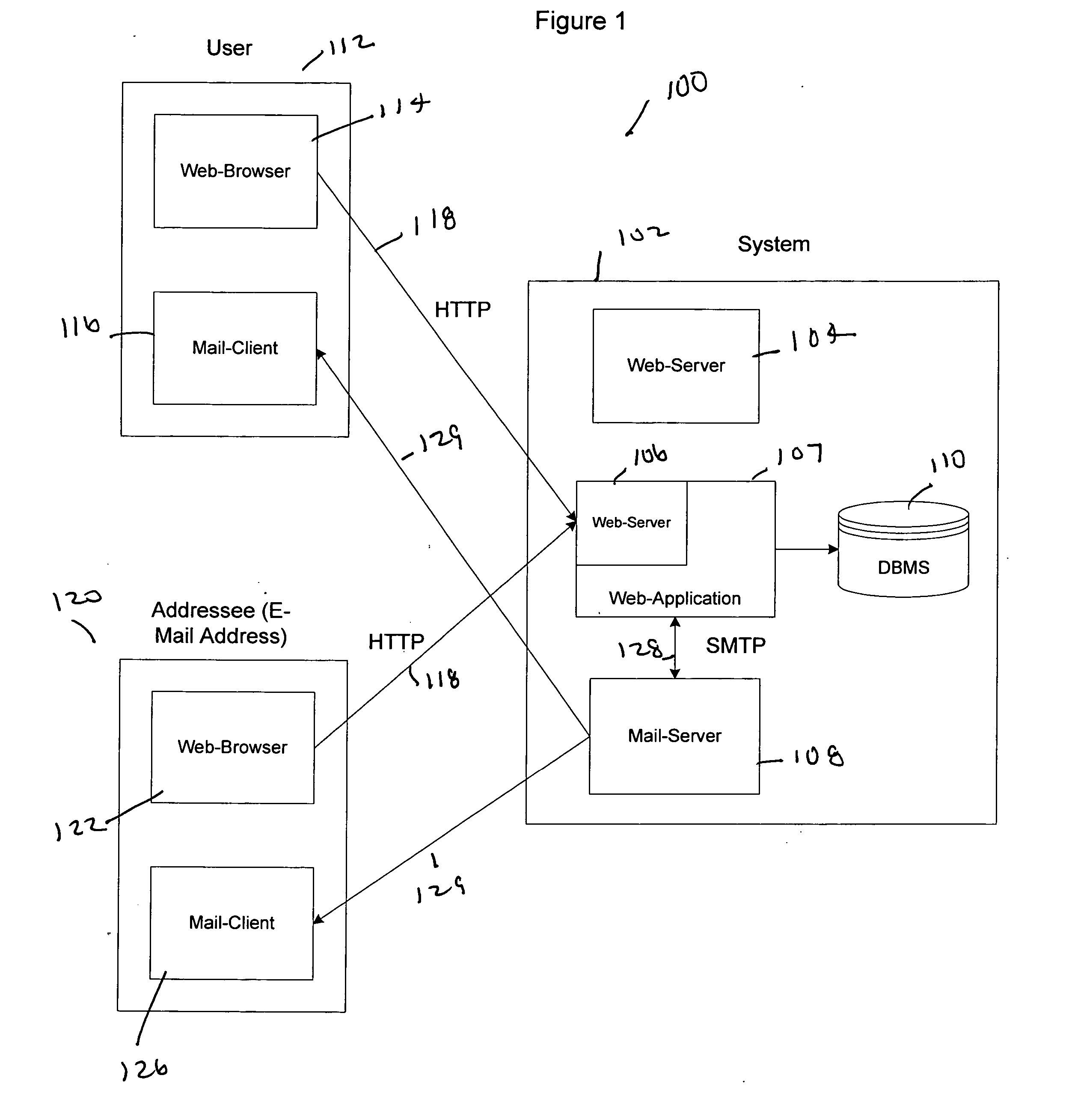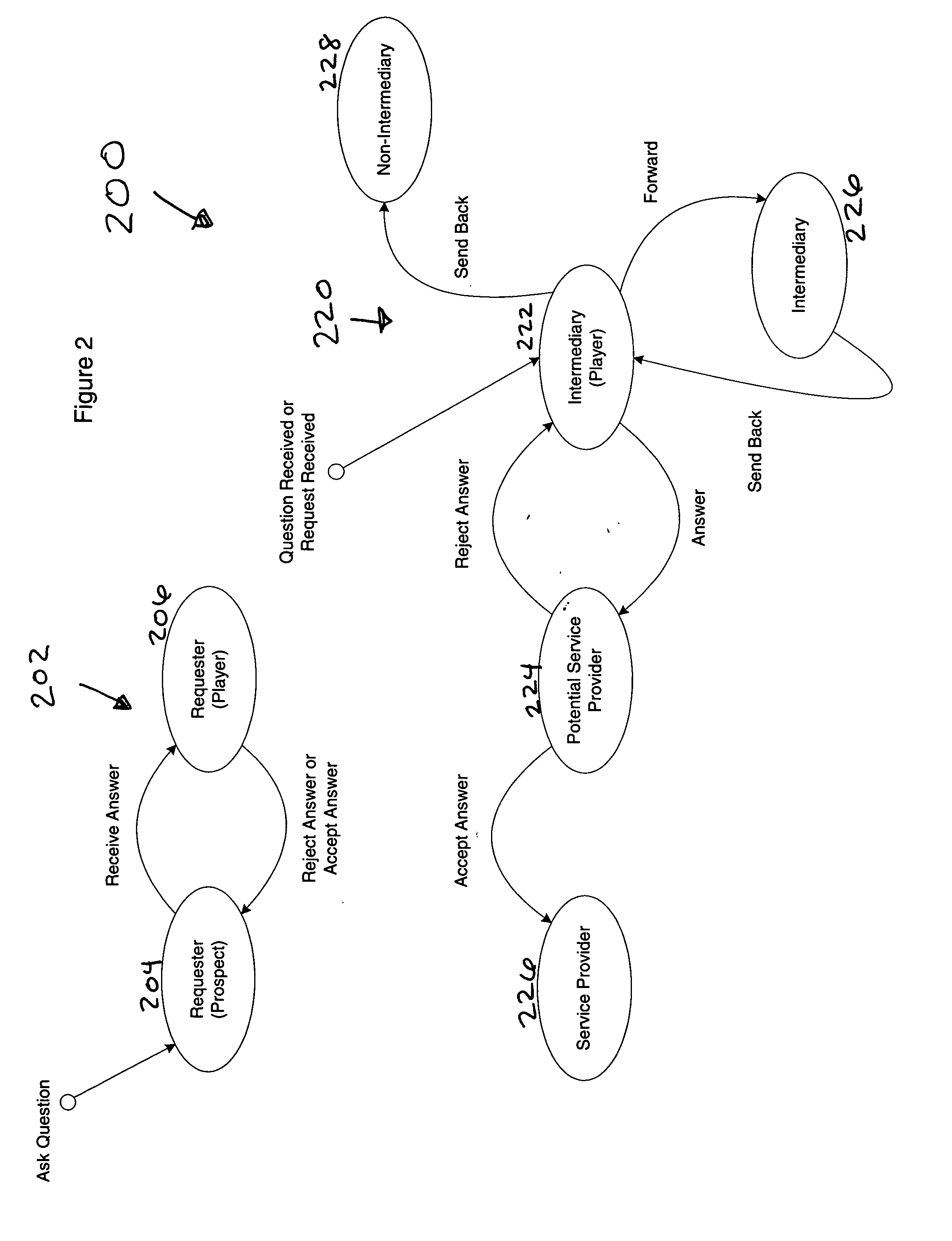System and method for intermediation of services
a service and service technology, applied in the field of system and service intermediation, can solve the problems of not really using the entire network, not being able to find the answer at the first or second level, and being difficult to remember exactly, etc., and achieve the effect of effective and efficien
- Summary
- Abstract
- Description
- Claims
- Application Information
AI Technical Summary
Benefits of technology
Problems solved by technology
Method used
Image
Examples
example i
[0359]FIG. 16, generally at 1600, shows a screen display according to the system and method of the present invention associated with a question sent by the requester (prospect) to an intermediary (player). As shown at 1602, the message relates to a question sent by “Steve Adams.” User information regarding the sent question is found at 1604. As stated, the entity sending the question is “Steve Adams.” Mr. Adams' e-mail address, and account information are also shown. At 1606, the sender and addressee e-mail addresses are shown along with the subject of the question. Also shown at 1606 is the question for which a solution is sought.
[0360] At 1608, information is provided that relates to the parameters for providing the solution. As shown, the reward amount is 10 Euros, the due date for the solution is by 6:00 p.m. on May 12, 2005, the response time for each intermediary is 3 days, the range is 10, and intermediation factor is 0.5.
[0361]FIG. 17, generally at 1700, shows a display sc...
example ii
[0427] Example II will follow the same process transactions that were followed in the Example I to the point where Mr. Barns forwarded the request to Mr. Tribiani. At this point in the Example II, the process will take a different path that will further assist in describing the rule-based system and method of the present invention. Accordingly, the actions of Messrs. Adams, Barns, and Tribiani that follow FIGS. 16-24 are incorporated herein by reference in the Example II process.
[0428]FIG. 34, generally at 3400, shows a screen display for a request-rejection that is being sent from Mt. Tribiani to Mr. Barns after Mr. Tribiani, instead of answering the question as in Example I, decided to reject it.
[0429] At 3402, the display screen shows graphically that Mr. Tribiani is the second intermediary in the process of the present invention. The subject and status are provided at 3404. Below this, the addressee of the send back message is shown, which in this case is Pete Barns. At 3406, ...
PUM
 Login to View More
Login to View More Abstract
Description
Claims
Application Information
 Login to View More
Login to View More - R&D
- Intellectual Property
- Life Sciences
- Materials
- Tech Scout
- Unparalleled Data Quality
- Higher Quality Content
- 60% Fewer Hallucinations
Browse by: Latest US Patents, China's latest patents, Technical Efficacy Thesaurus, Application Domain, Technology Topic, Popular Technical Reports.
© 2025 PatSnap. All rights reserved.Legal|Privacy policy|Modern Slavery Act Transparency Statement|Sitemap|About US| Contact US: help@patsnap.com



